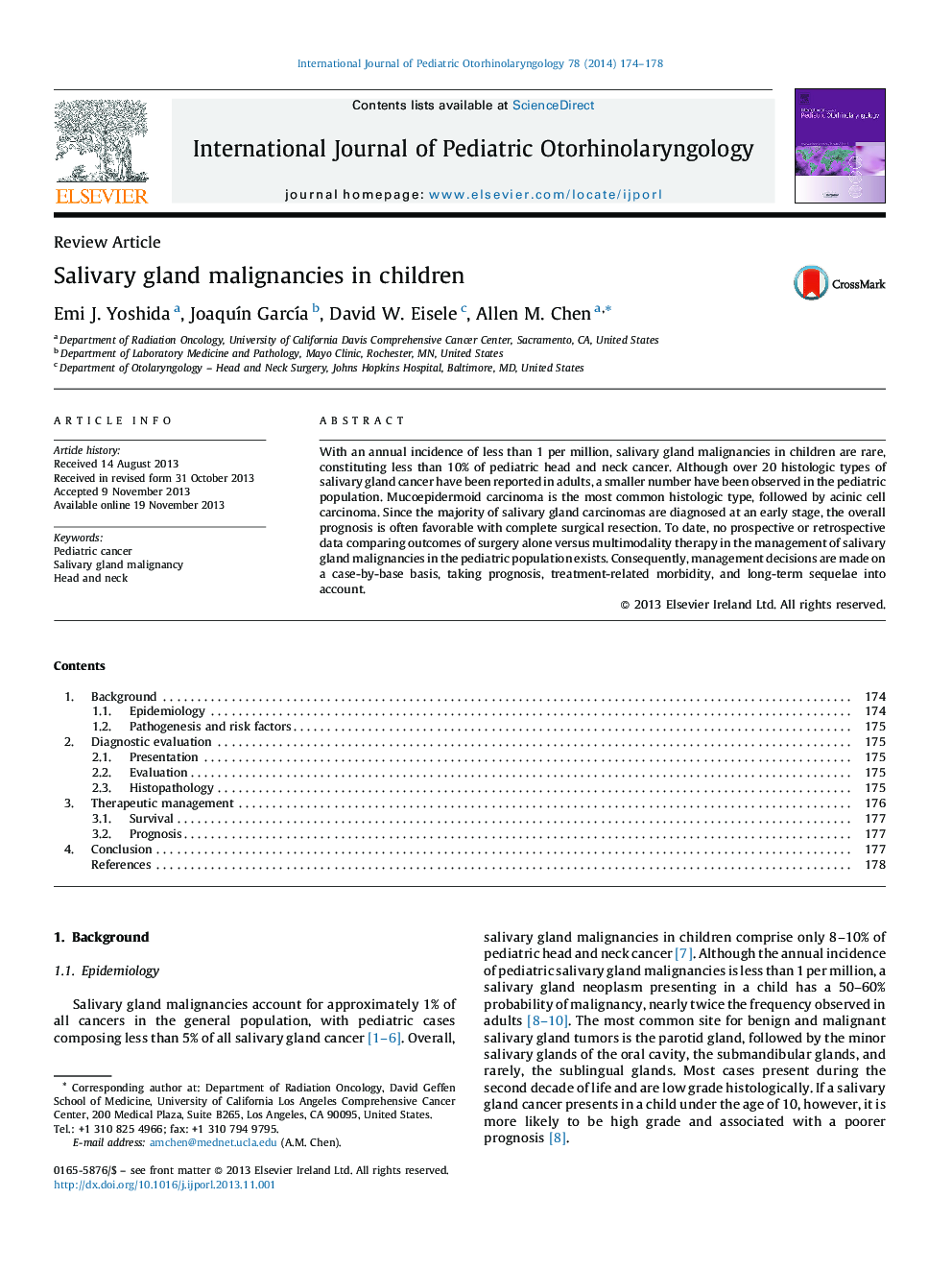| کد مقاله | کد نشریه | سال انتشار | مقاله انگلیسی | نسخه تمام متن |
|---|---|---|---|---|
| 6213799 | 1606011 | 2014 | 5 صفحه PDF | دانلود رایگان |
With an annual incidence of less than 1 per million, salivary gland malignancies in children are rare, constituting less than 10% of pediatric head and neck cancer. Although over 20 histologic types of salivary gland cancer have been reported in adults, a smaller number have been observed in the pediatric population. Mucoepidermoid carcinoma is the most common histologic type, followed by acinic cell carcinoma. Since the majority of salivary gland carcinomas are diagnosed at an early stage, the overall prognosis is often favorable with complete surgical resection. To date, no prospective or retrospective data comparing outcomes of surgery alone versus multimodality therapy in the management of salivary gland malignancies in the pediatric population exists. Consequently, management decisions are made on a case-by-base basis, taking prognosis, treatment-related morbidity, and long-term sequelae into account.
Journal: International Journal of Pediatric Otorhinolaryngology - Volume 78, Issue 2, February 2014, Pages 174-178
